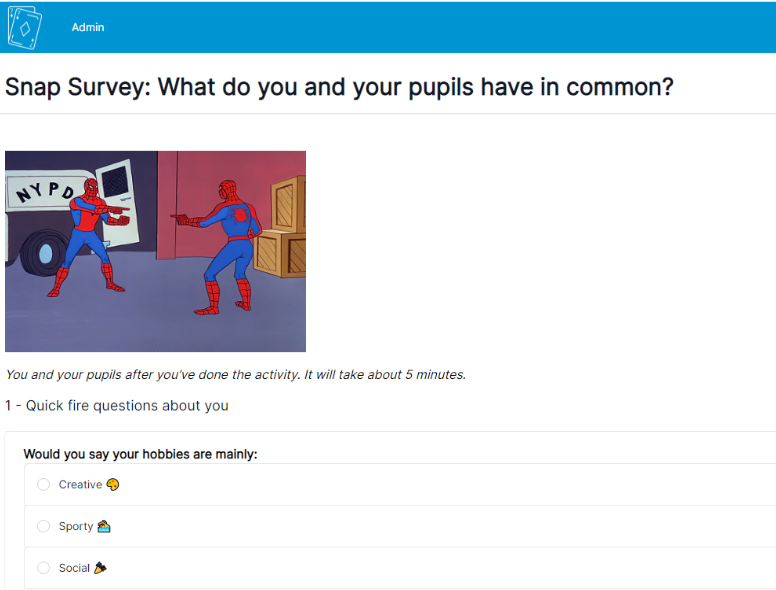Tutoring is one of the most effective ways to accelerate pupil progress. Indeed, its potential galvanised the creation of the National Tutoring Programme (NTP) – the UK Government’s flagship response to learning loss caused by school closures during the pandemic. However, pupils are only able to benefit from tutoring if they both attend sessions and actively engage while there.
To better understand the barriers to attendance and engagement with tutoring, we talked to tutoring providers and tutors themselves. One insight came up consistently: when pupils had a better relationship with their tutors, they were more likely to turn up to sessions and engage more positively. With this in mind, we primarily sought to improve tutoring attendance and engagement by improving the relationship between pupils and their tutors.
What we did
We developed and tested two rapport-building interventions and a third ‘reminder’ intervention with over 16,000 pupils and 1,800 tutors across the UK to see if we could move the dial on attendance and engagement. To the best of our knowledge, this is one of the largest bodies of research on how to boost pupil attendance at tutoring anywhere in the world.
The first intervention involved both tutors and pupils taking part in a Snap Survey. This was a fun 5-minute online quiz which asked pupils and their tutors about their interests and preferences. After filling it in, they each received a summary of 5 things they had in common. Tutors also received reminders about these similarities and prompts to weave them into future tutoring sessions. When people see themselves as similar to others, greater liking and closer relationships usually result – this intervention was inspired by research which showed that informing teachers and pupils of their similarities can boost teacher-pupil relationships and subsequently improve academic achievement.

In our second intervention, Prioritising Tutoring Relationships, tutors were encouraged to complete a training activity in which they were shown a series of different relationship-building strategies (for example, creating routines, celebrating mistakes) used by other tutors, and then prompted to develop their own. Informed by behavioural science research on the importance of timely reminders, tutors were then sent reminders two weeks after the initial activity that reminded them of the strategy they had created.
Our third intervention aimed to ensure that pupils remembered to attend by incorporating a series of nudges into reminder emails that pupils received before their sessions – for example, a prompt to put a calendar reminder in their phone so that they didn’t forget. The emails drew on a number of concepts from behavioural science including social norms, the messenger effect, personalisation, and implementation intentions.
What we found
Our first intervention, Snap Survey, increased attendance at tutoring sessions by 4.2 percentage points.

This result was statistically significant and, we think, meaningful in practice. If the control group had received the intervention, 1,600 more tutoring sessions would have been attended. Our interviews with tutors suggest that Snap Survey helped improve pupil attendance by improving the quality of the pupil-tutor relationship, and allowing tutors to tailor the content of tutoring sessions to pupil interests.
The intervention was delivered at a time when attendance in English schools was severely affected by partial school closures and pupil and staff absences. Data from the Department for Education shows school attendance was 58% for the Spring term of 2021.
Neither of our other interventions led to measurable improvements in tutoring attendance. This is not what we predicted when we started the work – Snap Survey was actually at the bottom of our internal predictions on what would work best (where was it for you?).
You can read more detail on the findings from these trials in the full reports. You can also check out our 2-page summary, step-by-step guide for tutors, and video explanation.
Where we go from here
Given what we have learned about the importance of the tutor-pupil relationship, and our finding that Snap Survey can increase pupil attendance, we are inviting all tutoring organisations to use it if they feel it could benefit their tutors and pupils. Thanks to support from the Education Endowment Foundation, Snap Survey has been updated to reflect the lessons learned from this trial, and is free to use. You can access the materials here (in response to feedback, we have also created an ‘offline’ version, available for download here). After their successful participation in this trial, The Tutor Trust have already confirmed that they are rolling out Snap Survey to all of their tutors going forward, and we hope that other tutoring organisations follow suit.
As the National Tutoring Programme moves into a new phase, we think there is more to learn about how behavioural insights can improve tutoring outcomes. We are particularly interested in testing ways to engage parents in their child’s tutoring, and in improving communication between tutors and schools to ensure that tutoring sessions are targeted to the topics where children really need help.
If you have questions or would like to partner with us, we would love to hear from you. Email lal.chadeesingh@bi.team to get in touch.
We would like thank everyone who contributed their support, time and ideas for this project: the Education Endowment Foundation, the National Foundation for Educational Research, the tutoring organisations who helped us deliver the studies (Action Tutoring, CoachBright, The Access Project, The Tutor Trust, Manning’s Tutors, Tute, Schools Partnership Tutors, Pearson and Bramble), our academic advisors (Dr Carly Robinson, Dr Todd Rogers, and Dr Hunter Gehlbach) and most of all, all the tutors and pupils who took part.







